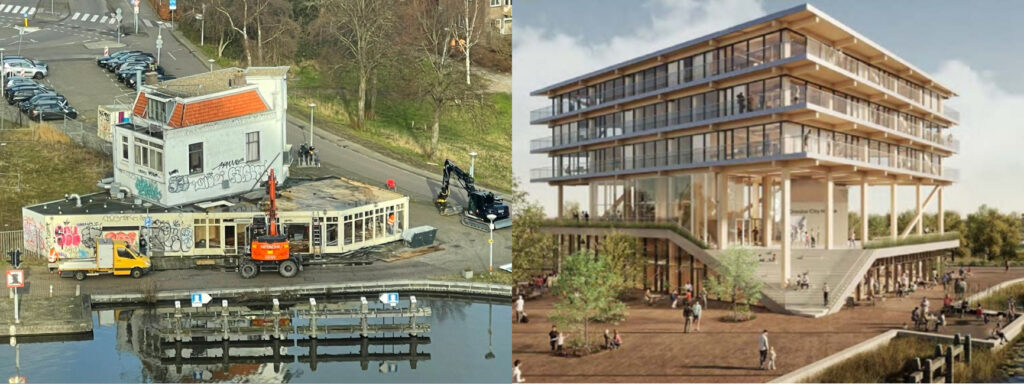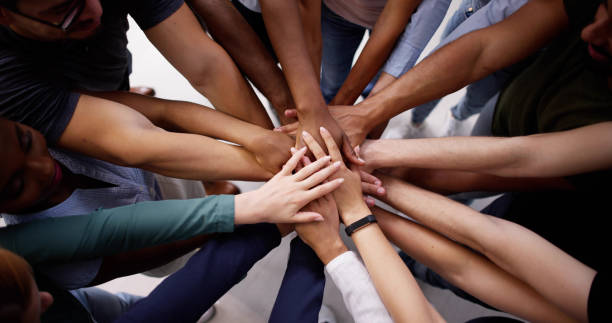Project
Connecting the Dots: Towards Sustainable Universities
Meet the team!
We are a team of 5 researchers and designers working on behalf of the Design Across Cultures track, here at the Digital Society School. Our mission is to connect the dots between HvA and UvA key stakeholders to support them in streamlining the transition to circular waste management at the university. As a team, we believe that all the necessary insights, skills, tools and willpower for circular waste management are already at our disposal – now is the time to ensure their implementation university-wide. That’s where we come in!
On this page, you can learn everything about our project and our solution for fostering collaboration between key stakeholders. But first things first: let’s introduce our team!
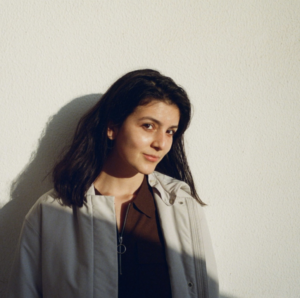
Ivanna is a design researcher and creative strategist interested in the relationship between sustainability and digital anthropology. Fascinated by overlooked narratives, she believes in deconstructing environmental, societal, cultural challenges in order to shift and (re)define perceptions.
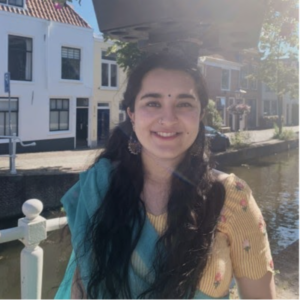
Prabhnoor is a researcher in digital realms, decolonization, and user experience; interested specifically in how they interact with each other.
“Every problem has layers that need to be dissected critically in order to arrive at the best possible solution”.
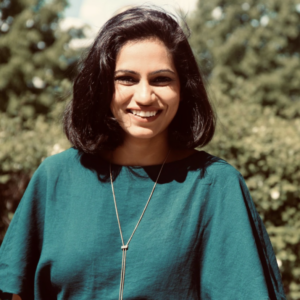 Priya is a designer/researcher trying to solve human and systems problems by using interrogative methods. Constantly building solutions for a better lifestyle and future.
Priya is a designer/researcher trying to solve human and systems problems by using interrogative methods. Constantly building solutions for a better lifestyle and future.
“Creating just a little order to the chaos.”See also https://www.behance.net/priya-yadav
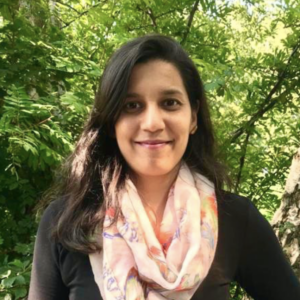
Sukhada is a graphic designer transitioning to user research. She enjoys solving complex problems by using design thinking methodology, user testing and prototyping.
“Every project is a domain waiting to be explored”.See also: www.aptesukhada.com

Simon is a renewable energy & sustainability professional, interested in the socio-technical aspects of emerging technologies in society. He believes developing strong positive networks while sharing and learning from one another is the foundation for which 21st-century challenges can successfully be tackled.
Together, we believe that all the necessary insights, skills, tools and willpower for circular waste management are already at our disposal – now is the time to ensure their implementation university-wide.
Our team has been working on the the following challenge:
How might we prototype a solution for HvA/UvA so that key stakeholders can identify clear roles, expectations and responsibilities in in the creation and execution of long-term circular waste management?
After 20 weeks of intensive researching and designing, we are proud to share our solution to this challenge: Connecting the Dots!
What is Connecting the Dots?
Our final solution consists of three elements that, together, will allow key stakeholders to explore, find and (re)define their respective roles, expectations and responsibilities regarding circular waste-management.
First aspect is an interactive Stakeholder Map. This map allows the stakeholders an overview of the complex network that exists within the system. Within this stakeholder map, the user can highlight and focus on multiple connections and explore how one position is connected to others within the university. The map also allows them to expand an individual profile and find out more about the person. Information such as what project they are involved in or what are their pain points, what they can offer to their connections, etc. are shared with the user. This will allow the user to search for people by name, profession or purpose and allow them to find people with whom they can connect and collaborate. It also allows people to think critically of their role within the sustainability system and what they bring to the table.

We see this tool as ever expanding and agile enough to include current and future additions to the network of sustainability and circular waste management within HvA and potentially UvA.
But should stakeholders navigate themselves through the map? That’s where the fun second aspect comes into play. The university is a vast ecosystem and clustering people within their spheres of work is a tough network to imagine. If you want a stakeholder from say Green Office and the Faculty of Business and Economics, there are a lot of people to sift through. Our customised filtration game called “Stakeholder Who?” will help with this. This digital quiz style game comes with pre-set prompts and questions that allow you to find the stakeholder you are looking for quickly. What if a stakeholder that you are looking for doesn’t exist? Worry not! This is a perfect opportunity for you to bring together colleagues and discuss this blind spot with them. Remember, every roadblock is an opportunity to improve.
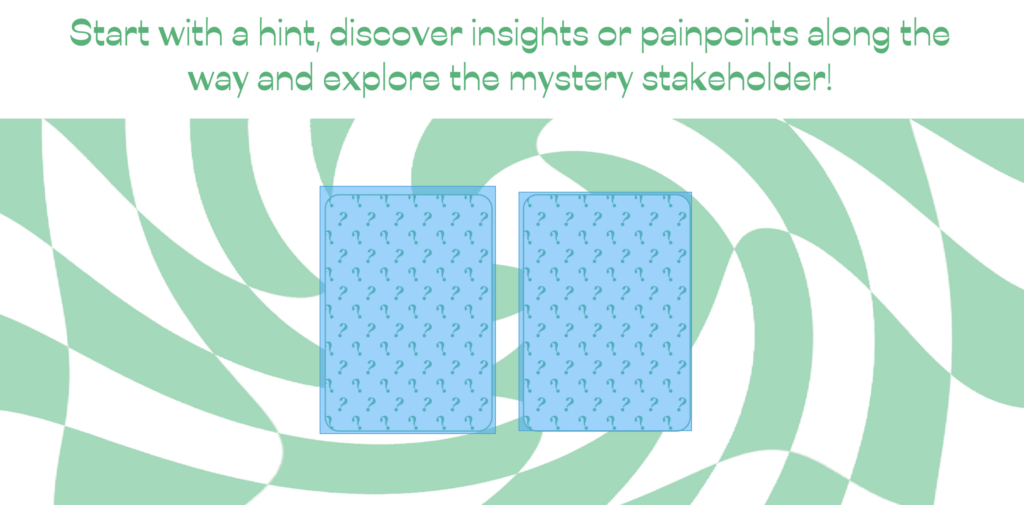
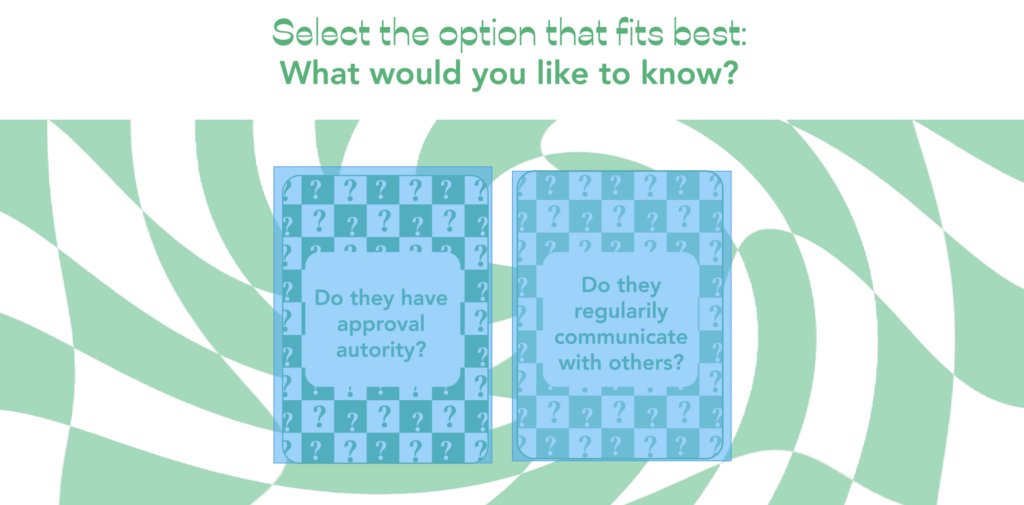
And what brings it all together? A toolkit. Right now, these profiles on the stakeholder map come from us, and we currently act as facilitators for these processes. When we hand over the solution to our stakeholders, we will provide them with a toolkit and guide that will help them navigate these solutions by themselves and truly make them their own. This way they can keep expanding them and designing them to find new ways of working together and achieving better collaboration and communication. In the end, continuing conversations and collaborations through creative methods is our final solution.
The Showcase
At the DSS online showcase on January 19, you are invited to come see our work! You can find us at the Connecting the Dots booth. We will begin with a short video about our solution and the process. It will be followed by an exciting round of Stakeholder Who?, where we will quiz our guests on guessing the stakeholder that they need for a project. Once we have the answer and have identified our stakeholder, we will go to the stakeholder map to read more on this person and find out who else can this person connect us to within the university. At this point we would like to give room for Q&A and gather further insights from our stakeholders and participants. Is there anything we missed? Who else could have we connected? Are there any pain points that our stakeholders would like to add to their own profile? Questions like these will allow us to use the showcase as a space to gather further data and help our stakeholders really make the solution their own.
For us, the final goal is to spark a continuous conversation on what else needs to happen and for our stakeholders to feel like the solution is their own. That is how we will connect the dots on this project and find sustainable ways of working together. We hope to see you there! Interested? You can register (for free) here.
The road towards our solution:
The idea of a stakeholder map was in the back of our minds since Sprint 1. It was because we as trainees faced the exact same problems as the stakeholders we were working with. We spent Sprint 1 and 2 trying to figure out who our exact stakeholders were and how were they connected to sustainability and circular waste management. We primarily used introductory interviews to gain this information. Each stakeholder identified other stakeholders for us and helped us get in touch.
During Sprint 2, we also explored the question “what does a sustainability initiative look like to you?”. We used the analogy of building a ‘sustainability bridge’ across 3 pillars of initiate-develop-launch to understand how the stakeholder saw the process. This activity allowed us a lot of insights and reflection moments with the stakeholder, especially when they got stuck at one of the pillars or ended up in the water.

By Sprint 3, we had talked to over 9 stakeholders from both UvA and HvA. By this time, one thing was evident: they all felt like they were working in silos, and were struggling on an individual level with the same challenges – time, money and working in isolation. This needed addressing and we thought what better way to bring them to the same table than a co-creation session.
The Co-Creation Session
At the end of Sprint 3, we did an online co-creation session with 9 stakeholders participating remotely to save a fictitious island on the Kingdom of Knowledge from flooding. By pooling their knowledge and resources, they were able to build a bridge and save the population of the drowning island. This session helped us facilitate a very important conversation around the reality of working in the university and their day to day challenges. Participants expressed similar pain points in an open setting and also acknowledged that it was nice to have a non-traditional meeting where serious issues were brought forth in creative analogies. It was also the first time all these key 9 players in sustainability and circular waste management were in one call at the same time.

Taking insights and feedback from this session, we started chalking out a solution space in Sprint 4. We realised our solution needed to have the aspects of creativity and exploration to it. We also came to a conclusion that a lot of products and tools such as apps, websites, dashboards, already existed or are being developed within the system. So we took a conscious decision to stay away from these and focus on the conversation part of it. The project came to a full circle for us when we realised that one of our primary insights and the stakeholders’ pain point was their struggle to identify others who work on the same things within the university network. This echoed our sentiment in the beginning of the semester and we decided to primarily focus on a stakeholder map, informed by our research as a part of our solution. This will ensure that the stakeholder finds a network within their reach and the goal is to allow them to add new connections.
